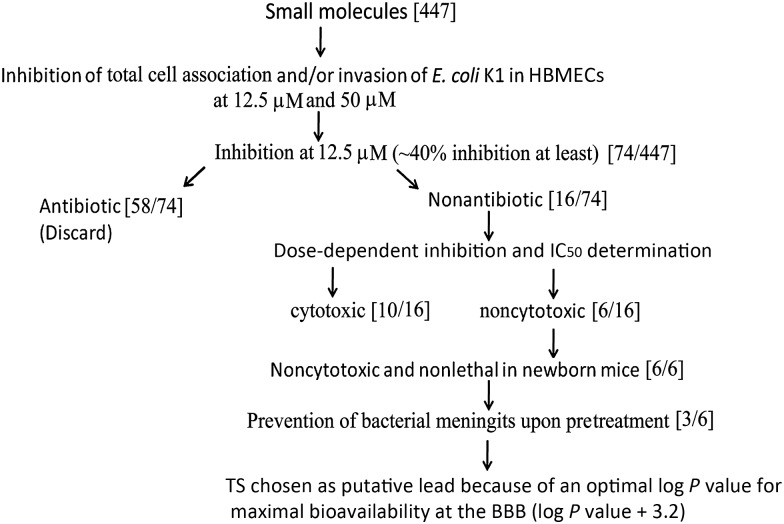Figure 1.
Flowchart of steps used in the identification of lead molecules that could potentially prevent Escherichia coli meningitis. Small molecules from the National Institutes of Health Clinical Collection (NCC) were tested for inhibition of total cell association/invasion of E. coli in human brain microvascular endothelial cells (HBMECs). Molecules that inhibited total cell-associated and/or invaded bacteria were referenced with the NCC database files, and molecules that were potential antibiotics were discarded from further studies. Molecules that were noncytotoxic in HBMECs were tested in 3-day-old mouse pups at a dose of 5 mg/kg body weight for their ability to prevent the onset of meningitis by E. coli K1. Finally, the compounds that did not cause deleterious effects in pups were analyzed using Pubchem for log P values, and those with values of >3 were data mined for reports on bioavailability at the blood-brain barrier (BBB). Abbreviation: IC50, median inhibitory concentration.

